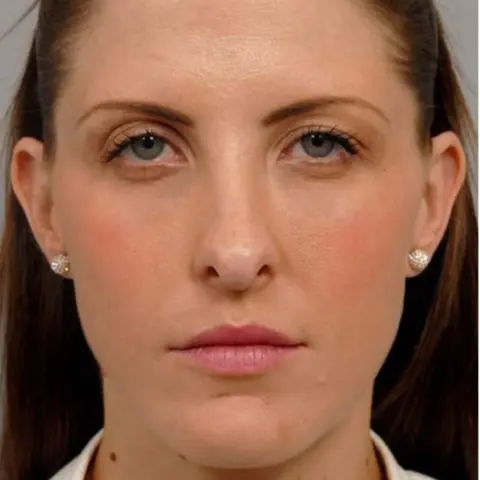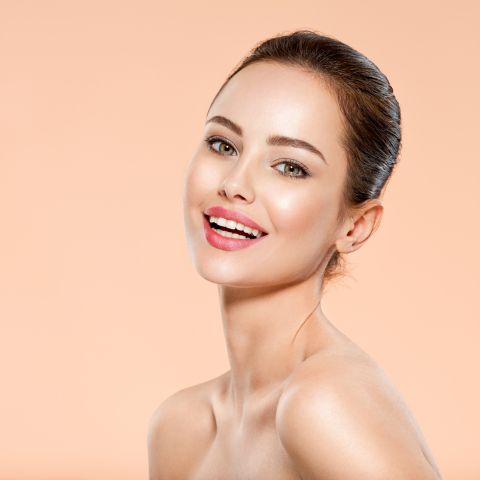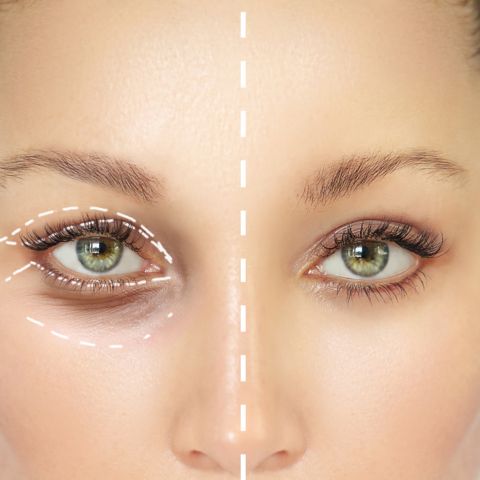

Otoplasty, also known as ear surgery or ear pinning, is a surgical procedure designed to correct the shape, size, position, or proportion of the ears. People choose to undergo this procedure for various reasons, which can include:
- Aesthetic concerns: Some individuals may be self-conscious about the appearance of their ears due to their size, shape, or prominence. Otoplasty can help improve the overall aesthetic balance of the face by bringing the ears into better harmony with other facial features.
- Congenital defects: Otoplasty can correct congenital ear deformities present from birth, such as lop ear, cup ear, or shell ear, where the natural folds and structure of the ear are underdeveloped or absent.
- Trauma or injury: Injuries or accidents can cause damage to the ears, altering their appearance or function. Otoplasty can be used to repair or reconstruct the ears, restoring their shape and appearance.
- Psychological well-being: The appearance of the ears can significantly impact an individual's self-esteem and confidence, particularly for children who may be teased or bullied due to the appearance of their ears. Otoplasty can help improve self-confidence by addressing these concerns.
Otoplasty is typically performed on patients who are at least five years old, as this is when the ears have generally reached their full size. Both adults and children can benefit from the procedure, as it can provide long-lasting, natural-looking results and improve overall facial harmony.
There are several types of ear surgery procedures available, designed to address various concerns related to the ears. Some of the most common otoplasty procedures include:
- Ear pinning (Pinnaplasty): This is the most common type of otoplasty and is used to correct prominent or protruding ears. The surgeon reshapes the cartilage and repositions the ears closer to the head, resulting in a more balanced and natural appearance.
- Ear reduction (Macrotia surgery): This procedure is performed to reduce the size of large or oversized ears. The surgeon removes excess cartilage and skin to achieve a more proportionate size relative to the patient's head and other facial features.
- Earlobe repair: Earlobe repair is often performed to correct stretched, torn, or elongated earlobes, which can result from wearing heavy earrings, trauma, or gauging. The surgeon removes damaged tissue and sutures the earlobe back together, restoring its natural shape and appearance.
- Ear augmentation (Microtia surgery): This procedure is used to correct underdeveloped or absent external ears, a condition known as microtia. The surgeon uses cartilage grafts, typically from the patient's rib, to create a new ear structure that closely resembles a natural ear.
- Stahl's ear correction: Stahl's ear is a congenital ear deformity characterized by an extra fold of cartilage that gives the ear an unusual pointy or elfin appearance. The surgeon reshapes the cartilage to create a more natural-looking ear shape.
- Cryptotia correction: Cryptotia is a condition where the upper portion of the ear is hidden beneath the skin on the side of the head. The surgeon releases the trapped ear cartilage and repositions the ear to achieve a more normal appearance.
Otoplasty offers several benefits and potential drawbacks. It is essential to consider both the pros and cons before deciding to undergo the procedure.
Pros:
- Improved appearance: Otoplasty can correct various ear deformities, leading to a more balanced and harmonious facial appearance. It can increase self-confidence and self-esteem in individuals who have been self-conscious about their ears.
- Long-lasting results: Otoplasty generally provides long-lasting, if not permanent, results. Once the ears have been reshaped and repositioned, they typically maintain their new appearance for the rest of the patient's life.
- Minimal scarring: The incisions made during otoplasty are usually placed behind the ear or within the natural creases of the ear, resulting in minimal visible scarring.
- Relatively short recovery time: The recovery time for otoplasty is relatively short compared to other surgical procedures. Most patients can return to their normal activities within one to two weeks.
Cons:
- Surgical risks: As with any surgery, otoplasty carries some risks, including infection, bleeding, anesthesia complications, and negative reactions to sutures or stitches. However, these risks are relatively low when the procedure is performed by a qualified and experienced plastic surgeon.
- Asymmetry: In some cases, there may be a slight asymmetry between the ears after otoplasty. While perfect symmetry is not always achievable, an experienced surgeon will work to ensure the best possible balance between the ears.
- Scarring: Although scarring is typically minimal and well-hidden, some patients may develop noticeable or hypertrophic scars. This risk can be reduced by following the surgeon's post-operative care instructions.
- Changes in sensation: Some patients may experience temporary or permanent changes in sensation, such as numbness or tingling, around the ears following otoplasty.
- Dissatisfaction with results: In rare cases, patients may be dissatisfied with the results of their otoplasty. This risk can be minimized by setting realistic expectations and working closely with a skilled surgeon.
A good candidate for otoplasty in Turkey typically has the following characteristics:
- Healthy overall: Candidates should be in good general health without any serious medical conditions that could complicate surgery or anesthesia. Poor candidates for otoplasty include patients with bleeding disorders, wound-healing disorders, or other serious medical conditions that might make anesthesia or elective surgery risky.
- Realistic expectations: A good candidate should have realistic expectations about the results of otoplasty, understanding that the goal is to improve the appearance and balance of the ears, not to achieve perfection.
- Concerns about ear appearance: Candidates for otoplasty should be seeking the procedure to address specific concerns related to the size, shape, or position of their ears. These may include protruding ears, overly large or small ears, congenital deformities, or issues resulting from trauma or injury.
- Sufficient ear development: Otoplasty is typically performed on patients who are at least five years old, as this is when the ears have generally reached their full size. However, certain congenital ear deformities might be treated at a younger age, depending on the specific circumstances.
Otoplasty in Turkey is typically an outpatient procedure, meaning there's no hospital stay required, and you can go home about two hours after surgery. The entire procedure should take two to three hours, depending on the complexity of the case and the specific techniques used.
The otoplasty procedure involves two primary aspects: reshaping the ear and moving the entire ear closer to the head. Here's an overview of the steps involved in a typical otoplasty procedure:
1. Anesthesia: Your surgeon will administer anesthesia to ensure your comfort during the procedure. This could be local anesthesia with sedation or general anesthesia, depending on the patient's age and preference.
2. Incision: The surgeon will create an incision behind or inside the ear to minimize visible scarring. This allows access to the ear cartilage for reshaping and repositioning.
3. Cartilage and skin removal: If necessary, the surgeon will remove excess cartilage and skin to achieve the desired ear shape and size.
4. Reshaping and repositioning: The surgeon will use sutures to move your ear tissue into the desired position, creating a more natural and balanced appearance.
5. Closing the incisions: The incisions will be closed using sutures, and the surgeon may apply surgical glue to further secure the incisions and promote healing.
6. Bandages: After the procedure, bandages will be applied to protect your ears as they heal and maintain their new position.
Some surgeons in Turkey may employ another type of ear pinning surgery known as incisionless otoplasty. During this procedure, stitches are placed through the skin to reshape prominent ears without the need for an incision. This technique may be suitable for certain patients, depending on the specific concerns and desired outcomes.
During the recovery period following an otoplasty, patients can expect several stages and aspects of the healing process. Here's what you can typically expect during otoplasty recovery:
- Bandages and dressings: After the surgery, your ears will be covered with bandages and dressings to protect them and maintain their new position. Your surgeon will provide instructions on when to remove or change the bandages.
- Pain and discomfort: You may experience some pain and discomfort during the first few days following the procedure. Your surgeon will likely prescribe pain medication to help manage any discomfort.
- Swelling and bruising: Swelling and bruising are common after otoplasty and may last for up to two weeks. Keeping your head elevated, using cold compresses, and taking over-the-counter anti-inflammatory medications can help reduce swelling.
- Limited activity: You should avoid strenuous activities and contact sports for at least 4-6 weeks following the surgery to allow your ears to heal properly. However, most patients can resume light activities and return to work or school within 1-2 weeks.
- Sleep position: It is recommended to sleep with your head elevated and avoid sleeping on your side for at least the first week after the surgery to prevent pressure on the ears.
- Suture removal: If non-absorbable sutures were used, your surgeon would remove them after 1-2 weeks. Absorbable sutures do not require removal and will dissolve on their own.
- Follow-up appointments: You will have follow-up appointments with your surgeon to monitor your healing progress and ensure the best possible results. It's essential to attend these appointments and follow your surgeon's post-operative care instructions.
- Final results: While you will notice an immediate improvement in the appearance of your ears after surgery, the final results will become more evident as swelling and bruising subside over several weeks. It can take up to six months for the ears to completely heal and settle into their new position.
The results of otoplasty are generally long-lasting, if not permanent. Once the ears have been reshaped and repositioned, they typically maintain their new appearance for the rest of the patient's life. However, it is important to note that individual experiences may vary, and factors such as aging and heredity can influence long-term results.
In most cases, patients can enjoy the improved appearance of their ears without needing any additional procedures in the future. It is essential to follow your surgeon's post-operative care instructions and attend all follow-up appointments to ensure the best possible results and monitor your healing progress. If you have any concerns about the appearance of your ears or the longevity of your otoplasty results, consult with your plastic surgeon.
Otoplasty cost in Turkey is generally more affordable than in Western Europe and the USA. While prices can vary depending on the surgeon, clinic, and specific details of the procedure, patients can typically expect to pay between $1,500 and $2,000 for otoplasty in Turkey.
In comparison, the cost of otoplasty in Western Europe and the USA ranges from $4,000 to $8,000 or more. The lower cost of otoplasty in Turkey is primarily due to the lower cost of living, favorable exchange rates, and lower operating costs for medical facilities in the country.
It is important to remember that the cost of the procedure should not be the sole factor when choosing a plastic surgeon or clinic. Patients should prioritize the expertise, experience, and qualifications of the surgeon and ensure that the clinic has a solid reputation for safety and quality outcomes. When performed by a skilled and qualified surgeon, otoplasty in Turkey can offer excellent results at a more affordable price compared to Western Europe and the USA.
Choosing us for your otoplasty procedure in Turkey offers several advantages, including:
1. Experienced and skilled surgeons: We work with a network of highly skilled and experienced plastic surgeons who specialize in otoplasty and other aesthetic procedures. These surgeons are committed to providing exceptional care and achieving the best possible results for their patients.
2. High-quality facilities: We partner with state-of-the-art medical facilities that meet international standards for safety, hygiene, and quality. You can expect to receive care in a clean, modern, and comfortable environment.
3. Personalized care: We understand that every patient is unique, and we focus on providing personalized care tailored to your specific needs and goals. From the initial consultation to post-operative follow-up, the team at Elara will be with you every step of the way to ensure a smooth and successful experience.
4. Affordable prices: As mentioned earlier, otoplasty costs in Turkey are generally more affordable than in Western Europe and the USA. Here, we offer competitive pricing without compromising on quality, allowing you to achieve the results you desire at a more accessible price point.
5. Comprehensive packages: We offer comprehensive packages that include not only the surgical procedure but also pre-operative consultations, post-operative care, and assistance with travel and accommodation arrangements. This ensures a seamless and stress-free experience for patients traveling to Turkey for their otoplasty procedure.
6. Customer support: We provide exceptional customer support to ensure that all your questions are answered and concerns are addressed. Their dedicated team will be available to guide you throughout your medical tourism journey.
By choosing us for your otoplasty in Turkey, you can be confident that you will receive high-quality care, personalized attention, and excellent results at an affordable price.


Surgical Art: Otoplasty Results


The Otoplasty Difference: Ear Aesthetics Improved


Ear Position Perfected with Otoplasty




